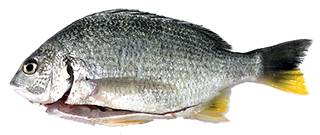About
The Asian Food Dictionary is a culinary and language resource for those of us in the diasporas. Ever had trouble following grandma's recipe? Or looking for the right ingredient at the supermarket? We're here to help! Our dictionary makes cooking easier and connects us with our culinary cultures through a triple-checked, multilingual index of ingredients (with full color photography!) 📸🌈🥬.
Our dictionary is a living document. We are constantly adding new sources to our research, and hope to expand our geographic and linguistic reach over time. For now, we are focusing on Asian ingredients, with an East Asian bias, simply because our founding team members are majority East Asian. We are actively looking for ways to expand our scope (and team), but know that this project is a very much a self-funded work in progress 💘💦.
This project also aims to combat outdated and often colonial habits of the English-language food media world. First, we want to acknowledge that a food has many names (due to regional and translation differences) by publishing any that are in common usage. Second, we encourage writers not to use "Chinese" as a stand-in for Asian or exotic when it comes to naming ingredients (e.g. Chinese broccoli, Chinese celery), and as such, our editorial promotes alternatives even if they are less popular ❤️🩹.
How we work
Our research methodology is basically to find as many sources as we can — whether it’s a reference book, a website, a supermarket label or a member of our community. We then note down what each source calls the food, taking particular care when there are multiple terms or disagreements. If a name is used among multiple sources, we will then publish it as one of the names publicly. (Sometimes we find new sources and have to revise/add to what’s published.) Generally, we rank the names we publish with the most popular one going first — though in the case of English, we will take a heavier editorial hand to demote names that start with “Chinese.”
All the photographs on the website are also taken by one of our team members. The image of a raw or fresh ingredient is particularly important to us because recipes often only show the final product, and because casual internet searches often turn up some extremely unappetizing photos of our foods. So our team members do their best to make a judgment call on selecting a ripe and fresh sample to photograph.
On the technical side, the dictionary database is currently being maintained on Airtable, which is both easy to use and facilitates collaboration. The website is then built from the database using static site generating framework Gridsome, which is based on Vue.js. The site design templates are coded by hand and with the help of the Tachyons CSS framework.
Who we are
We are a motley crew of Asians in diaspora who have bonded with one another over food, language and the internet. Here are some names and bios for those of us who worked on this dictionary and consented to being credited publicly:
- Jason Li is a Toronto-based designer, artist and educator from Hong Kong. He enjoys his leafy greens with his meals very much and continues to believe his parents that "greens don't make you full".
- Rosa Wan is a Hong Kong-Canadian artist and facilitator surviving the city life in Toronto one dimsum hang out at a time. Her creative ventures are powered by fermented mustard green, canto soups, and nostalgic snacks.
- Athena Lam arrived in Germany from Canada by way of Hong Kong and Japan. She is known to haul rice and other life essentials across impractical distances to sustain her cooking practices.
- Wee Ling Soh is a second-generation Singaporean writer and photographer with Malaysian and southern Chinese roots. She likes her noodles spicy, sometimes with a generous splash of Chinkiang black vinegar.
- E.L. Guerrero is a media and software artist stumbling about in Toronto. Born and bred in Manila, she will never understand how "not too sweet" is supposed to be a compliment.
- Ashley Kang is a cybersecurity professional living life like a sitcom with her chosen family in New York City. A Korean American who grew up mostly in southern California, her kitchen must-haves include butter, Jongga kimchi, and a nice round skillet for Korean BBQ (#GrillDad)
With additional programming help from Meena Kumari.
Support the Food Dictionary
As we stated previously, the dictionary is currently a self-funded, side project within the team. We hope to figure out a way to compensate our members appropriately in the future, and pay outside contributors in kind. One way you can help us do that right now is to tip us on Ko-fi (whether it’s a one time virtual coffee or a monthly boon).
Another way you can help nudge this project along is to send us a link to a resource (book, website, etc.) that has a good index of ingredients from your culture/in your language(s). In the past, friends of the team have sent us recipe websites, PDFs of public government publications, and links to ingredient-explainer picture books.
Submit
Want to share a translation that we’re missing? Did get we something wrong? Submit an entry or correction.
Contact us
Email: team@asianfooddictionary.com
Instagram: @asianfooddictionary
And don’t forget to sign up for our newsletter for major project updates:



